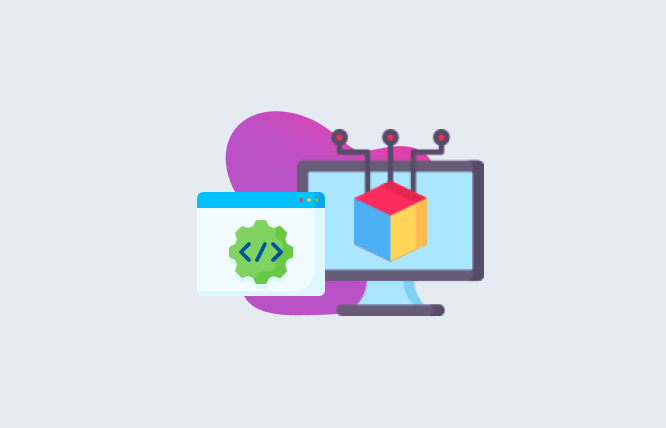Introduction
A business process management software presents a host of benefits but is also associated with numerous challenges.
Try to take a glance at the landscape of modern business operations. You will notice that companies are always seeking manners to streamline processes, enhance efficiency, and be competitive. This is why Business Process Management software (or BPM software) is now witnessed as a highly important tool, as it presents a valuable structured approach when it comes to the optimising and managing of business processes. In light of this, the purpose of this blog is to take note of the importance of BPM software implementation for the sake of efficiency.
You will also get a good idea regarding business process management tools that could aid you with regard to business management solutions. Hopefully, if your organisation is seeking top bpm tools, you will find aid in this piece.
Getting to Know Business Process Management Software
A business process management software features a host of the latest top BPM tools. Understand that the nature of these business process management tools is to optimise, monitor, execute, automate, and model business processes. It is very likely that these processes spread across a host of functions and departments in a firm, such as supply chain management, customer service, human resources, and finance. The business process management software will offer a special centralised platform for improving workflows, analysing, and documenting. This will allow any firm to enhance its effectiveness and organisational agility.
Gains Attained by Business Process Management Software Implementation
Let’s have a look at some of the leading gains that can be attained by business process management software implementation and how it can impact your enterprise technology solutions:
Standardisation of Process
Business process management software aids in the standardisation of processes throughout a company. This will ensure compliance and consistency with regulatory requirements. When standardised workflows are defined, any given organisation can decrease the number of errors, enhance overall quality, and also minimise operational risks.
Efficiency Enhancement
There is no denying the fact that automation is a prominent feature of business process management software, which goes on to permit the automation of manual processes and repetitive tasks. Some possibilities are that this automation could decrease manual intervention, free resources for the likely strategic initiatives, and enhance process execution. The result will be that the organisation will enjoy much better levels of productivity and efficiency.
Better Control and Visibility
Today’s latest business process management software offers real-time visibility into process performance. This is done via reporting tools, analytics, and dashboards. It is because of this transparency that stakeholders properly track a given set of key performance indicators, take into account bottlenecks, and make data-driven decisions, all for the purpose of process optimisation. Furthermore, business process management software allows robust control mechanisms and governance. This will ultimately ensure that there is proper adherence to defined policies and processes.
Adaptability and Agility
Throughout a business environment, any given company should be adaptable and agile to change. Any given BPM software facilitates agility by permitting updates and rapid process modifications, which are in response to regulatory requirements, changing customer needs, and market conditions. It is this very flexibility that permits companies to stay responsive and competitive throughout dynamic markets.
Focus on Customers
When internal processes are optimised, business process management software allows companies to provide superior customer experiences. Quicker response times and streamlined workflows result in the attainment of enhanced customer loyalty, retention, and overall satisfaction. Note that business process management software also lets companies proactively identify and address various customer pain points. This will go on to drive continuous innovation and improvements.
The Challenges
These are some pressing challenges associated with BPM Software implementation:
Organisation-Related Resistance
The implementation of BPM software usually requires a significant amount of alterations in an organisation’s overall culture, workflows, and roles. It is quite possible that there will be a good degree of resistance from the workforce that is used to the old ways. This is why organisation-related resistance should be properly addressed via change management strategies, training, and effective communication.
Integration Complexities
The process of BPM software integration with the already present systems and applications could be a time-consuming and complex process. Heterogeneous IT environments, disparate data sources, and legacy systems could present integration challenges. This means that careful coordination and planning may be required to allow seamless interoperability.
Complexity of Process
There will be a host of processes that will be deemed as inherently complex and involve a host of dependencies, decision points, and stakeholders. Automating and modelling such processes in BPM software demands a thorough understanding of process intricacies alongside a collaborative approach, which takes into account cross-functional teams.
Compliance and Governance
The assurance that there is proper compliance with internal policies and regulatory requirements is highly important in BPM software implementation. This is why companies should try their best to establish audit trails, access controls, and robust governance frameworks to maintain data security, privacy, and integrity.
Sustainability and Scalability
If any given corporation evolves and grows, then the concepts of sustainability and scalability will be essential considerations for its BPM software implementation. It is important to highlight here that scalable solutions that can accommodate organisational complexity, user concurrency, and increasing process volumes are critical for long-term success.
BPM Software Implementation – The Best Practices
Take note of these best practices when it comes to business process management software implementation:
Stating Clear Objectives
It is immensely important to clearly state the BPM software implementation goals and objectives and align them with a given set of strategic organisational priorities and the required outcomes.
Stakeholder Engagement
All the relevant stakeholders from different departments of a given organisation should be involved in the BPM implementation process. This will ensure alignment with business needs and buy-in ownership.
The Process Analysis
The organisation should go ahead with an in-depth analysis of the existing process. This should be done to properly take into account any sort of existing improvement opportunities, bottlenecks, and inefficiencies. Perhaps it will be best for the organisation to utilise process mapping techniques to properly visualise dependencies and workflows.
Process Prioritisation
Processes should be prioritised according to their strategic importance, complexity, and impact on an organisation. Perhaps it will be better to begin with low-hanging fruit to showcase easy/quick wins, thereby creating a helpful momentum for the sake of broader adoption.
Pilot and Iterate
There will be cases in which it will be best to go ahead with a pilot BPM software implementation with a small team or in a controlled environment for the sake of gathering feedback, testing functionality, and iteratively refining processes. It is critical to iterate depending on the lessons being learned and improve on a continuous basis.
Offering Support and Training
If a given organisation ensures support and training to users, this will go on to ensure that the users are properly proficient in making effective use of BPM software. Some other things that should be offered are assistance, resources, and guidance to address user concerns and questions.
Monitoring and Measuring Performance
The establishment of KPIs to measure the impact and performance of BPM software is important in its own regard. Here, organisations should be responsible enough to regularly monitor KPIs and make use of analytics to identify patterns, trends, and all those areas that require optimisation.
Final Words
The implementation of business process management software is a massive strategic imperative for companies that are looking to enhance competitiveness, agility, and efficiency in a given dynamic business environment. When there is a standardising of processes, improving visibility, and automating workflows, the business process management software permits companies to properly optimise operations, deliver better customer experiences, and drive innovation.
No doubt, there are a host of challenges, such as integration complexity and organisational resistance. Still, adopting the best practices and going for a highly beneficial collaborative approach will go on to significantly increase the gains attained by BPM software implementation. This will then make way for sustained success and growth.
Finally, if you are interested in learning more about BPM software, then contact FuturByte today. It comes as a reputed software service provider that offers services on a host of fronts, such as custom mobile app development.
Frequently Asked Questions
Sure, business process management software comes as a digital tool that is made to optimise, monitor, execute, automate, and model business processes with an organisation. This can be any technology-driven organisation, such as a custom mobile app development company.
Some of the essential features that are found in BPM software are as follows: integration capabilities, collaboration tools, analytics and reporting, workflow management, automation, and process modelling. It is also important to highlight that there could be a host of layers associated with any single feature mentioned here. This is why if this is the first time that your organisation will look to adopt BPM software, it will be important for you to take the assistance of a professional who is well-versed in the software utility and who has a good degree of knowledge regarding your organisation.
A reliable and reputed BPM software will go on to enhance efficiency by standardising processes, streamlining workflows, automating repetitive tasks, and offering real-time visibility into process performance. Another very important point to highlight here is that BPM software will enable data-driven decision-making.
The benefits of applying BPM software are manifold, such as enhanced customer satisfaction, better control and visibility over processes, enhanced adaptability and agility, and improved productivity and efficiency.
Some of the most prominent challenges associated with the implementation of BPM software are integration complexity with existing systems, organisational resistance to change, ensuring compliance and governance, managing process complexity, and addressing sustainability and scalability. If you are part of a given organisation that is looking to address these or any other challenges, then it is very likely that you would require the assistance of a professional or entity that has a history of successfully dealing with the challenges.
Have questions or feedback?
Get in touch with us and we‘l get back to you and help as soon as we can!





